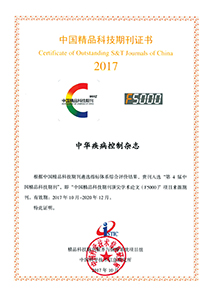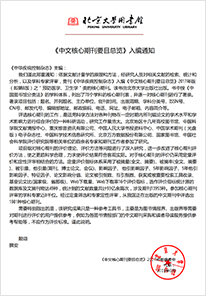2019 Vol. 23, No. 6
Display Method:
2019, 23(6): 621-624.
doi: 10.16462/j.cnki.zhjbkz.2019.06.001
Abstract:
2019, 23(6): 630-634.
doi: 10.16462/j.cnki.zhjbkz.2019.06.003
Abstract:
2019, 23(6): 650-655.
doi: 10.16462/j.cnki.zhjbkz.2019.06.007
Abstract:
2019, 23(6): 656-660.
doi: 10.16462/j.cnki.zhjbkz.2019.06.008
Abstract:
2019, 23(6): 661-666.
doi: 10.16462/j.cnki.zhjbkz.2019.06.009
Abstract:
2019, 23(6): 667-672.
doi: 10.16462/j.cnki.zhjbkz.2019.06.010
Abstract:
2019, 23(6): 673-678.
doi: 10.16462/j.cnki.zhjbkz.2019.06.011
Abstract:
2019, 23(6): 679-684.
doi: 10.16462/j.cnki.zhjbkz.2019.06.012
Abstract:
2019, 23(6): 685-689.
doi: 10.16462/j.cnki.zhjbkz.2019.06.013
Abstract:
2019, 23(6): 694-699.
doi: 10.16462/j.cnki.zhjbkz.2019.06.015
Abstract:
2019, 23(6): 700-705.
doi: 10.16462/j.cnki.zhjbkz.2019.06.016
Abstract:
2019, 23(6): 706-710, 716.
doi: 10.16462/j.cnki.zhjbkz.2019.06.017
Abstract:
2019, 23(6): 711-716.
doi: 10.16462/j.cnki.zhjbkz.2019.06.018
Abstract:
2019, 23(6): 717-722.
doi: 10.16462/j.cnki.zhjbkz.2019.06.019
Abstract:
2019, 23(6): 723-727.
doi: 10.16462/j.cnki.zhjbkz.2019.06.020
Abstract:
2019, 23(6): 728-732.
doi: 10.16462/j.cnki.zhjbkz.2019.06.021
Abstract:
2019, 23(6): 733-736.
doi: 10.16462/j.cnki.zhjbkz.2019.06.022
Abstract:
2019, 23(6): 737-740.
doi: 10.16462/j.cnki.zhjbkz.2019.06.023
Abstract:
2019, 23(6): 741-744.
doi: 10.16462/j.cnki.zhjbkz.2019.06.024
Abstract:


 Email alert
Email alert RSS
RSS Abstract
Abstract HTML
HTML PDF
PDF





